Vincent Massey
Charles Vincent Massey PC CH CC CD FRSC(hon)[n 1] (February 20, 1887 – December 30, 1967) was a Canadian lawyer and diplomat who served as the Governor General of Canada, the 18th since Confederation. Massey was the first Governor General of Canada who was born in Canada.
Vincent Massey | |
|---|---|
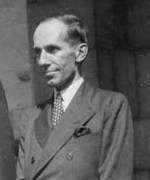 | |
| 18th Governor General of Canada | |
| In office February 28, 1952 – September 15, 1959 | |
| Monarch | Elizabeth II |
| Prime Minister | Louis St. Laurent John Diefenbaker |
| Preceded by | The Viscount Alexander of Tunis |
| Succeeded by | Georges Vanier |
| Personal details | |
| Born | Charles Vincent Massey February 20, 1887 Toronto, Ontario, Canada |
| Died | December 30, 1967 (aged 80) London, England |
| Spouse(s) | |
| Children | Lionel Massey Hart Parkin Vincent Massey II |
| Relatives | Raymond Massey (brother) Daniel Massey (nephew) Anna Massey (niece) |
| Profession | Diplomat |
| Signature | |
Massey was born into an influential Toronto family and was educated in Ontario and England, obtaining a degree in law and befriending future prime minister William Lyon Mackenzie King while studying at the University of Oxford. He was commissioned into the military in 1917 for the remainder of the First World War and, after a brief stint in the Canadian Cabinet, began his diplomatic career, serving in envoys to the United States and United Kingdom. Upon his return to Canada in 1946, Massey headed a royal commission on the arts between 1949 and 1951, which resulted in the Massey Report and subsequently the establishment of the National Library of Canada and the Canada Council of the Arts, among other grant-giving agencies. In 1952 he was appointed Governor General by King George VI on the recommendation of Prime Minister Louis St. Laurent, to replace the Viscount Alexander of Tunis as viceroy, and he occupied the post until succeeded by Georges Vanier in 1959.
On September 16, 1925, Massey was sworn into the King's Privy Council for Canada,[3] giving him the accordant style of The Honourable. However, Massey was later, as a former Governor General of Canada, entitled to be styled for life with the superior form of The Right Honourable. He subsequently continued his philanthropic work and founded Massey College at the University of Toronto and the Massey Lectures before he died on December 30, 1967.
Early life, education, and career
Massey was born in Toronto, Ontario to Anna (née Vincent) and Chester Daniel Massey, the owner of the Massey-Harris Co. (predecessor to the Massey-Ferguson Tractor Company) and the patriarch of one of the city's wealthiest families. The Massey family, of American origin, had immigrated from Cheshire, England to the Massachusetts Bay Colony in 1630. The clan was strongly Methodist and played an important role in supporting local religious, cultural, and educational organizations, including Victoria University, Massey Hall, and the Metropolitan Methodist Church (now the Metropolitan United Church). Massey was thus raised among Toronto's elite, which gave him a number of social and familial connections throughout his life.
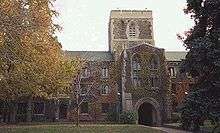
Massey was raised in the family mansion at 519 Jarvis Street and educated at St. Andrew's College,[4] in Aurora, Ontario, then at University College at the University of Toronto (U of T), despite his family's close ties to Victoria College. At the U of T, he enlisted in The Queen's Own Rifles of Canada in 1907 and joined the Kappa Alpha Society,[5] through which he met future prime minister William Lyon Mackenzie King, who would be his long-time friend. After passing matriculation three years later with his Bachelor of Arts degree in history and English,[6] Massey continued his education at Balliol College at the University of Oxford, where he earned his Master of Arts in history.[6][7]
In 1911, thinking that the University of Toronto lacked a facility where its 4,000 students could engage in extracurricular activities, Massey donated $16,290 to the students' fund to build a student centre and thereafter led the endowment and construction efforts.[6][8] In 1913, he returned to Toronto and became the first Dean of Men at Burwash Hall, the residence recently donated to Victoria University by his father. He also served as a lecturer on modern history at the college.[7][8] When Canada entered World War I in 1914, Massey was commissioned as an officer for Military District No. 2 and was called to work for the Cabinet war committee.[9] On June 4, 1915, Massey married Alice Parkin, the daughter of Sir George Robert Parkin, who was a former principal of Upper Canada College (UCC) and secretary of the Rhodes Trust; through the marriage, Massey later became the uncle of George Grant and the great-uncle of Michael Ignatieff. Within a few years, Vincent and Alice had two sons, Lionel Massey (1916–1965) and Hart Parkin Vincent Massey II (1918–1996; a WWII Spitfire pilot who flew with John Gillespie Magee, author of "High Flight"[10][11]). Massey was discharged at the cessation of hostilities in 1918.[9]
In 1921, Massey became president of his father's business, Massey-Harris Co. He also pursued philanthropic interests, mostly in arts and education, such as his collection of paintings and sculpture through his Massey Foundation, which he established in 1918. By the next year, U of T's social and athletic facility was completed and dedicated to the memory of Massey's grandfather, Hart Massey, as Hart House; there, Massey participated as an amateur actor and director in the building's theatre.[8] In 1925, finding himself unsuited to corporate life, he resigned from Massey-Harris. Later that year, on September 16, he was appointed to the King's Privy Council by Governor General the Viscount Byng of Vimy, and was also made a minister without portfolio in Mackenzie King's Cabinet. He ran for the House of Commons in the riding of Durham in the 1925 federal election, but was defeated[7] Though he thereafter resigned his cabinet post, Massey was still included in the Canadian delegation to the 1926 Imperial Conference,[8] where was drafted the Balfour Declaration that would ultimately lead to vast constitutional changes in the role of the monarch and his viceroys throughout the former empire.
Diplomatic career

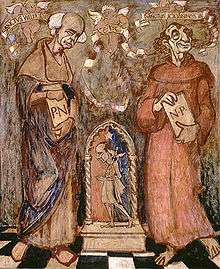
Later in 1926, on November 25, Governor General the Marquess of Willingdon acted on Mackenzie King's advice to appoint Massey as the first Canadian Envoy Extraordinary and Minister Plenipotentiary to the United States for His Majesty's Government in Canada,[13] making Massey Canada's first ever envoy with full diplomatic credentials to a foreign capital.[n 3] Massey returned to Canada in 1930, as Mackenzie King had put his name forward for appointment as High Commissioner to the United Kingdom. However, five days after Massey relinquished his post in Washington, D.C., Mackenzie King's Liberal Party was defeated in the federal election, and Richard Bennett became prime minister. Bennett objected to Massey as the government's representative to the UK on the grounds that, as a former Liberal Cabinet member, Massey did not enjoy the political confidence of the new Conservative government that was needed by the individual occupying the position.
In 1932, Massey became the first president of the newly formed National Liberal Federation of Canada, before which the Liberal Party was a loose and informal association of national, provincial, and regional entities without a permanent central organization.[8][16] In the 1935 federal election, the Liberals returned to office with a majority and Mackenzie King was once again prime minister. On November 8, 1935, Massey was appointed the High Commissioner to the United Kingdom for His Majesty's Government in Canada and arrived at Canada House to find as his secretary the man who would be his successor as Governor General of Canada,[13] Georges Vanier. The two men set about regular diplomatic business, but, throughout 1936, Massey had to contend with the death of King George V and the accession and then the abdication of Edward VIII in favour of his younger brother, Prince Albert, Duke of York, who ascended the throne as George VI.
As high commissioner, Massey used his connections to bring to Canada House a host of personalities from "the highest quarters."[9] Two such persons were the Viscount and Viscountess Astor, who were the nucleus of the Cliveden set, which itself was a group of aristocratic individuals rumoured to be Germanophiles not only in favour of the appeasement of Adolf Hitler, but also supporters of friendly relations with Nazi Germany.[17] Though these allegations were historically challenged as exaggerations,[18] Irving Abella and Harold Troper claimed in their book None Is Too Many: Canada and the Jews of Europe 1933-1948 that Massey was an enthusiastic supporter of the Munich Agreement and worked in concert with various elected and non-elected people in government, including Mackenzie King and Ernest Lapointe, to put obstacles in the way of Jewish refugees fleeing Europe for Canada, or even using Canada as a stopover en route to some other country. However, Canadian immigration policy at the time favoured trained farmers, which excluded most Jews, who were largely city dwellers,[19] and the Cabinet of Mackenzie King was already resistant to changes in the law.[n 4] Seven decades later, these accusations against Massey resulted in a campaign in Windsor, Ontario, to rename a high school that had originally been named in his honour.
Nevertheless, Massey was a Canadian and British patriot and worked not only to maximize Canada's war effort once World War II broke out, but also served through 1936 as the Canadian delegate to the League of Nations, between 1941 and 1945 as a trustee of the National and Tate Galleries, and as chair of the Tate's board of governors from 1943 to 1945. For this work Massey was inducted by King George VI into the Order of the Companions of Honour in 1946, Upon his return to Canada Massey continued in the same fields. He sat as chair of the National Gallery of Canada from 1948 to 1952 and served as Chancellor of the University of Toronto from 1948 to 1953.[8] In 1949, Massey was appointed head of the Royal Commission on National Development in the Arts, Letters and Sciences, which resulted in the Massey Report of 1951 and led to the establishment of the National Library of Canada and the Canada Council of the Arts.[21]
Governor General of Canada
Massey was the first Canadian-born individual to be appointed Governor General; all his predecessors had been born elsewhere in the British Empire or British Commonwealth. As a widower (his wife had died in 1950), he is also the only unmarried person ever to reside at Rideau Hall. Usually, the governor general's wife is the viceregal consort and acts as the hostess and chatelaine of the household; during Massey's tenure, his daughter-in-law, Lilias Massey, fulfilled the role, though she was not accorded the style of Her Excellency, usually given to the viceregal consort.
As governor general-designate
On February 1, 1952, the Office of the Prime Minister of Canada announced that George VI had approved Prime Minister Louis St. Laurent's choice of Massey to succeed the Viscount Alexander of Tunis as the King's representative. Five days later, however, the King was dead and Massey, upon his swearing-in, became the first Canadian-born representative of George's daughter, Queen Elizabeth II. In the bustle over the king's death, there was little fanfare around Massey's appointment; Lord Alexander quietly departed Canada shortly after the announcement of Massey as his successor, leaving Chief Justice Thibaudeau Rinfret as administrator of the government in his place, as Massey was, at the time, in London. As he was a member of the Privy Council of the United Kingdom, he attended the new queen's Accession Council on February 7.[22]
In Canada, there was some commentary on the new representative of the monarch. The notion of a Canadian-born Governor General, and one not belonging to the peerage, was viewed with suspicion by traditionalists. Massey, thus, was to be a compromise: while it was known he was closely associated with the Liberal Party, having been the group's chairman during the 1930s, the governor general-designate was a Canadian by birth but he also embodied loyalty, dignity, and formality, as expected from a viceroy. Massey stated that, for his role as governor general, he looked for inspiration to one of his predecessors and a man Massey had known for decades: the Baron Tweedsmuir, whom Massey said he "greatly admired" and had "learnt much from" his tenure as governor general.[23]
Life magazine ran a profile piece on Massey in which the Marquess of Salisbury described Massey as an elegant individual—citing Massey's Oxford schooling and tailored clothing as illustrations—and thoroughly Canadian, though noting that "Vincent's a fine chap, but he does make one feel like a bit of a savage."[8] But the elite demeanour he was sometimes criticised for was not evident in Massey's belief that the Crown belonged to Canadians and that it was his task as viceroy to act as a link between the people and the monarch.[21][24] He similarly believed that the arts were a way to assert Canadian sovereignty and that the various artistic fields should be accessible to all Canadians.[25]
In office
On February 28, 1952,[21] Massey was sworn in as governor general of Canada in a ceremony in the Senate chamber, where he was presented with the Canadian Forces Decoration (subsequently given to all governors general upon taking office).[26] However, Massey's first months as the viceroy were muted, due to the ongoing 16-week period of official mourning.[27] It was not until the coronation of Elizabeth II on June 2, 1953, that Massey was called upon to take charge of any national celebration. For the occasion, he revived the use of the state carriage when he rode in it, with an accompanying guard of Royal Canadian Mounted Police, from the royal and viceroyal residence of Rideau Hall to Parliament Hill, where he introduced to the gathered crowd the Queen's coronation speech, broadcast around the world via radio. He also gave a silver spoon to each child born on that day.[21]
Massey welcomed the Queen and her consort, the Duke of Edinburgh, to Ottawa on three occasions from 1957 on; when the royal couple were engaged in a cross-country tour, Massey invited them to stay at his private estate, Batterwood, near Port Hope, Ontario.[28] He also hosted a number of foreign heads of state, including United States president Dwight D. Eisenhower on November 13, 1953.[29] As a return gesture, Massey was invited by Eisenhower to Washington, D.C., where, on May 4, 1954, he addressed a joint session of the United States Congress.[30]
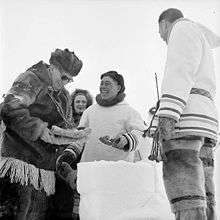
It was Massey's intent as governor general to work to unite Canada's diverse cultures. He travelled across the country, using any and all available transportation, including canoe and dog sled, and delivered speeches promoting bilingualism, some 20 years before it became an official national policy. Along with the usual ceremonial duties undertaken by a viceroy, such as opening in 1955 the new home of the Royal Saskatchewan Museum and,[31] with his 1958 Dominion Day speech, inaugurating the Canadian Broadcasting Corporation's first national televised broadcast,[32] the Governor General toured the Canadian arctic extensively, journeying to such places as Frobisher Bay and Hall Beach in the Northwest Territories, meeting with local Inuit residents, participating in their activities, and watching their performances. During his governor generalship, Massey also became actively involved with Upper Canada College, donating funds and his time to the school and seeing a number of spaces there named in his honour in return.[33] As part of his effort to unify Canadians, it was Massey's desire to see established an entirely Canadian honours system. Though such a thing was never realised during his viceregal tenure, he helped lay the groundwork for the system that would be implemented by his successor, and in 1967, just months before his death, Massey was inducted as one of the first companions of the Order of Canada.[21]
Promoting culture
Biographer Claude Bissell believed that Massey's most influential years were between 1949 and 1959, when Massey "made his major contribution. More than any other Canadian, he was responsible for the first major movement of the arts and letters from the periphery of national concern towards the centre. It was a notable achievement."[34] In this vein, Massey created awards for artistic endeavours, such as the Governor General's Medals in Architecture, and promoted the concept of an annual, national arts festival, which eventually led to the founding of the National Arts Centre. Further, Massey initiated in 1954 the Governor General's Gold Medal for the Institute of Chartered Accountants, as well as in 1959 the Massey Medal, for excellence in geographic endeavours for the Royal Canadian Geographical Society.[21]
Post-viceregal life and death
Upon his final departure from Rideau Hall as governor general, Massey retired to Batterwood House, in the village of Canton, near Port Hope, Ontario. For his service to the Crown, he was awarded from the Queen the Royal Victorian Chain, making him the second commoner or non-head of state, the first Canadian, and one of the only two Canadians to have ever received the honour.[35] Just prior to the end of his time as governor general, the Queen wrote to Massey: "I wish to send you my congratulations and my sincere thanks for the manner in which you have discharged [your] duties. I know that as my personal representative you have always sought to maintain the right relationship between the Crown and the people of Canada. I am grateful to you for this because I regard it as the most important function among the many duties of the appointment which you have held with such distinction."[36] The Queen had wanted to appoint Massey as a Knight of the Order of the Garter, but Prime Minister John Diefenbaker, after consulting the rest of Cabinet, advised the Queen against conferring the honour.[36]
Massey continued his philanthropic work, dedicating his time to the stewardship of the Massey Foundation, and its endowment to the University of Toronto, in particular.[37] His donation of Hart House to the University of Toronto stipulated that the building be restricted to men only, and it was not until after his death that the deed of gift was altered to allow for women becoming full members in 1972.[38] While Hart House continued as one of the recipients of Massey's attention and funds, Massey also expanded the scope of his donations to U of T with the establishment in 1963 of Massey College, to which Massey's protégé, Robertson Davies, was appointed as the college's first master. In 1961, the Massey Lectures were also initiated, conceived as a focus on important contemporary issues by leading thinkers,[39] and they remain considered as the most important public lecture series in Canada.[21]
At the end of 1967, on December 30, Massey died while on holiday in the United Kingdom. His remains were returned to Canada and he was, as is customary for former governors general, given a state funeral, in early January 1968.[8] He was buried alongside his wife at historic St. Mark's Anglican church in Port Hope; his was among the last burials permitted in the small cemetery (Farley Mowat was interred in 2014).[28][40]
Honours
.jpg) | ||||
Appointments
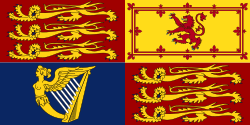
.svg.png)
.svg.png)
- 1952 – September 15, 1959: Bailiff Grand Cross, Prior, and Chief Officer in Canada of the Most Venerable Order of the Hospital of Saint John of Jerusalem (GCStJ)
- September 15, 1959 – December 30, 1967: Bailiff Grand Cross of the Venerable Order of Saint John (GCStJ)
.svg.png)
.svg.png)
.svg.png)
.svg.png)
Medals
.svg.png)
.svg.png)
.svg.png)
.svg.png)
.svg.png)
Awards

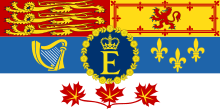
Honorary military appointments
.svg.png)
.svg.png)
.svg.png)
Honorary degrees
.svg.png)
.svg.png)
.svg.png)
Honorific eponyms
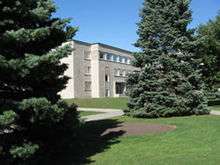
Events
Geographic locations
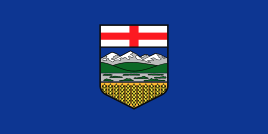
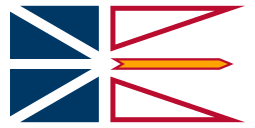
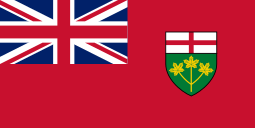
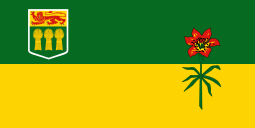

Buildings
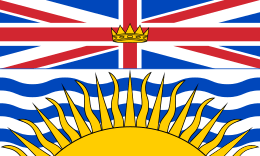

- Massey Library, within the Massey Building



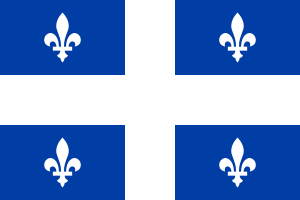

Schools


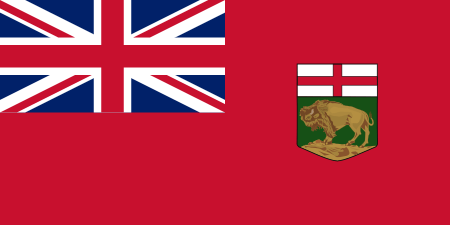

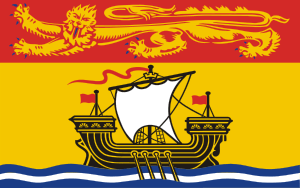


















Civic structures
Arms
 |
|
List of works
- The making of a nation. Boston; New York: Houghton Mifflin company. 1928. p. 44.
- Good neighbourhood: and other addresses in the United States. Toronto: The Macmillan of Canada. 1930. p. 362.
- Canada in the world. Toronto: J.M. Dent & Sons. 1935. p. 229.
- The sword of Lionheart & other wartime speeches. Toronto: The Ryerson Press. 1942. p. 117.
- On being Canadian. Toronto: J.M. Dent. 1948. p. 198.
- Things that remain. Toronto. 1952. p. 16.
- On books & reading. Toronto: Ryerson. 1954. p. 12.
- The Canadian Club of Montreal 1905–1955. Montreal: Canadian Club of Montreal. 1955. p. 16.
- Uncertain sounds. Sackville, N.B.: Mount Allison University. 1957. p. 38.
- Speaking of Canada: addresses. London: Macmillan. 1959. p. 244.
- Canadians and their Commonwealth. Oxford: Clarendon Press. 1961. p. 20.
- What's past is prologue: the memoirs of the Right Honourable Vincent Massey, C.H. Toronto: Macmillan. 1963. p. 540.
- Confederation on the march: views on major Canadian issues during the sixties. Toronto: Macmillan. 1965. p. 101.
See also
Notes
- In Massey's Order of Canada citation on the website of the Governor General of Canada, his post-nominal letters are listed as: PC, CH, CC.[1] Massey was, however, entitled to far more letters; his 1948 autobiography On Being Canadian lists him as: CH, DCL, LLD(hon), FRSC. The department of Veterans Affairs page on the Canadian Forces Decoration mentions that Massey was the first governor general to be awarded the medal upon taking office, which entitled him to utilize the post-nominal letters CD. The same page lists him as "The Right Honourable Vincent Massey, CC, CH, GCJ, CD,"[2] although this listing in inconsistent with the accepted Canadian/Commonwealth Order of precedence.
- Massey is depicted (centre) as Mercury bearing his caduceus, a symbol of peace and commerce. To either side of Massey are two former prime ministers of Canada; at left, Wilfrid Laurier, and right, John A. Macdonald. Each holds a tablet, Laurier's inscribed with the letters P.N., and Macdonald's with N.P., standing for, respectively, Politique national and National Policy.[12]
- The government of Canada had sent ministers and other diplomats abroad since the end of the 19th century; for example, the first High Commissioner to the United Kingdom was dispatched on May 11, 1880,[14] and the credentials of the first Canadian mission to the United States were received on November 7, 1918.[15] However, governmental capitals within the British Empire and later the Commonwealth of Nations were not considered foreign, and Canadian diplomats received by foreign governments were not considered of a diplomatic rank above chargé d'affaires.
- Massey's viceregal successor, Georges Vanier, while posted as Canadian envoy to numerous European governments in exile and later as the ambassador to France, fought, along with his wife, Pauline Vanier, to see Canada allow in more refugees from the Second World War. Their efforts, however, were ignored by the government of Mackenzie King and it was not until 1947 that more European refugees were allowed to settle in Canada.[20]
References
- Office of the Governor General of Canada. "Honours > Order of Canada > Vincent Massey, P.C., C.H., C.C." Queen's Printer for Canada. Retrieved March 15, 2009.
- Department of Veterans Affairs. "Canada Remembers > Records & Collections > Canadian Orders, Medals and Decorations > Canadian Military Medals and Decorations > Efficiency and Long Service Decorations and Medals > Canadian Forces Decoration". Queen's Printer for Canada. Retrieved March 15, 2009.
- Privy Council Office (October 30, 2008). "Information Resources > Historical Alphabetical List since 1867 of Members of the Queen's Privy Council for Canada > M". Queen's Printer for Canada. Retrieved March 15, 2009.
- "Jarvis Mansion District > Jarvis Mansions Today > The Massey Mansion > Massey House History". Jarvis Mansion District. Archived from the original on September 6, 2008. Retrieved March 19, 2009.
- "History > Famous members". The Queen's Own Rifles of Canada. Archived from the original on July 24, 2011. Retrieved July 28, 2011.
- Faught, Brad (2002). "A Feast of Thought". U of T Magazine. Toronto: University of Toronto (Spring 2002). Archived from the original on September 18, 2008. Retrieved March 16, 2009.
- Carter, Don (February 1, 1998). "Royal Commission on National Development in the Arts, Letters and Sciences > His Excellency The Right Honourable Vincent Massey P.C., C.H. 1887–1967". Library and Archives Canada; Queen's Printer for Canada. Retrieved March 16, 2009.
- "Library > Miscellaneous > Biographies > Vincent Massey". Answers Corporation. Retrieved March 16, 2009.
- Granatstein, Jack. "The Canadian Encyclopedia". In Marsh, James Harley (ed.). Biography > Governors-General of Canada > Massey, Charles Vincent. Toronto: Historica Foundation of Canada. Retrieved March 16, 2009.
- Stephen M. Fochuk, "Maggie's War - John Gillespie Magee's One and Only Time he engaged the Luftwaffe", Air Force Magazine, Vol. 41, No. 3, 15 December 2017, p. 44, p. 49
- http://www.raf-lincolnshire.info/digby/digbyhistory_ch3_1941.htm
- Library and Archives Canada. "MIKAN ID 2837667". Queen's Printer for Canada. Archived from the original on July 22, 2011. Retrieved March 17, 2009.
- "Massey, Vincent (Non-career): Posts". Global Affairs Canada. Queen's Printer for Canada. Retrieved November 25, 2019.
- "Heads of Post List: United Kingdom of Great Britain and Northern Ireland". Global Affairs Canada. Queen's Printer for Canada. Retrieved November 25, 2019.
- "Heads of Post List: United States of America (Pre-Legation Representation)". Global Affairs Canada. Queen's Printer for Canada. Retrieved November 25, 2019.
- Koop, Ryan (June 2008), The Elusive Nature of National Party Organization in Canada and Australia, retrieved June 17, 2012
- Spivak, John (January 2008). Secret Armies. New York: BiblioLife. ISBN 978-1-4346-9347-1.
- John, Taylor. "A Reevaluation of Cockburn's Cliveden Set". Ex Post Facto. San Francisco: History Department at San Francisco State University (1999). Retrieved March 16, 2009.
- English, John (February 27, 1994). Shadow of Heaven: The Life of Lester Pearson. 1. Toronto: Lester and Orpen Denys. ISBN 978-0-09-982550-0.
- "Pauline & Georges P. Vanier and Jewish Refugees". Vanier College. Retrieved March 14, 2009.
- Office of the Governor General of Canada. "Governor General > Former Governors General > The Right Honourable Charles Vincent Massey". Queen's Printer for Canada. Archived from the original on October 9, 2006. Retrieved May 15, 2018.
- Bousfield, Arthur; Toffoli, Gary (2002), Fifty Years the Queen: A Tribute to Her Majesty Queen Elizabeth II on Her Golden Jubilee, Toronto: Dundurn Press, p. 72, ISBN 9781550023602
- Galbraith, William (February 2002). "The Canadian and the Crown". Ottawa Citizen. Archived from the original on November 20, 2008. Retrieved March 19, 2009.
- Pepall, John (March 1, 1990). "Who is the Governor General?". The Idler. Toronto. Archived from the original on July 6, 2011. Retrieved November 13, 2010.
- "Being Canadian: Massey legacy focus of research". The Ring. June 6, 2000. Archived from the original on June 21, 2007. Retrieved March 18, 2009.
- Veterans Affairs Canada. "Canada Remembers > Records & Collections > Canadian Orders, Medals and Decorations > Canadian Military Medals and Decorations > Efficiency and Long Service Decorations and Medals > Canadian Forces Decoration". Queen's Printer for Canada. Retrieved March 20, 2009.
- "CBC Digital Archives > Society > The Monarchy > Proclamation of Elizabeth as Queen > Did you know?". CBC. Retrieved March 18, 2009.
- "St. Mark's Anglican Church > History". Anglican Church of St. Mark's. Archived from the original on May 2, 2009. Retrieved March 19, 2009.
- "Travel and History > Information Tables > Presidential Visits to Foreign Nations > Eisenhower Travels". Online Highways. Retrieved March 9, 2009.
- "Office of the Clerk U.S. House of Representatives > Art & History > Congressional History > Joint Meetings, Joint Sessions, and Inaugurations > 80th to 90th Congresses (January 6, 1947 to September 18, 1986)". Office of the Clerk. Archived from the original on March 26, 2009. Retrieved March 20, 2009.
- "Royal Saskatchewan Museum > About Us > Museum History > The Museum's Homes". Royal Saskatchewan Museum. Archived from the original on October 3, 2009. Retrieved March 20, 2009.
- Levine, Allan (June 28, 2013). "The evolution of July 1". National Post. Archived from the original on July 1, 2013. Retrieved June 30, 2013.
- Killbourn, William (1984). Toronto Remembered. Toronto: Soddart Publishing. pp. 180–187. ISBN 978-0-7737-2029-9.
- Bissell, Claude T. (1986). The Imperial Canadian: Vincent Massey in Office. Toronto: University of Toronto Press. pp. 361. ISBN 978-0-8020-5656-6.
- McCreery, Christopher (2008), On Her Majesty's Service: Royal Honours and Recognition in Canada, Toronto: Dundurn, p. 55, ISBN 9781459712249, retrieved November 11, 2015
- McCreery 2008, p. 54
- "Great Past > Great Minds for a Great Future > Great Minds Banners > Vincent Massey". University of Toronto. Retrieved March 19, 2009.
- "40 Years of Women at Hart House". Hart House. University of Toronto.
- Fraser, John (October 2, 2008). "Feeling the Pinch". Maclean's. Toronto: Kenneth Whyte. ISSN 0024-9262. Retrieved March 20, 2009.
- http://www.historicplaces.ca/en/rep-reg/place-lieu.aspx?id=9964
- Office of the Governor General of Canada. "Honours > Insignia Worn by the Governor General". Queen's Printer for Canada. Archived from the original on October 9, 2006. Retrieved February 27, 2009.
- John S. Wilson (1959), Scouting Round the World. First edition, Blandford Press. p. 269
- "HONORARY DEGREES" (PDF). Queen's University. December 15, 2008. Archived from the original (PDF) on March 4, 2009. Retrieved March 7, 2009.
- "University of Saskatchewan Archives > University History > Honorary degree recipients". University of Saskatchewan. Retrieved March 16, 2009.
- "UBC Archives > Honorary Degree Citations 1950–1954". University of British Columbia. Retrieved March 16, 2009.
- Birrell, David. "Peak Finder > Mount Massey". Dave Birrell. Archived from the original on May 25, 2012. Retrieved March 19, 2009.
- "Massey Theatre & Plaskett Gallery > About Massey > History". Massey Theatre Society. Archived from the original on January 29, 2009. Retrieved March 19, 2009.
- "Calgary Board of Education > Schools and Areas > School Websites/Profiles > Vincent Massey School". Calgary Board of Education. Archived from the original on February 21, 2009. Retrieved March 19, 2009.
- "Vincent Massey School". School District 76. Retrieved March 18, 2009.
- "Brandon School Division > Our Schools > Vincent Massey High School". Brandon School Division. Archived from the original on December 30, 2008. Retrieved March 18, 2009.
- "Pembina Trails School Division > Schools > Vincent Massey Collegiate". Pembina Trails School Division. Archived from the original on April 13, 2009. Retrieved March 18, 2009.
- "Vincent Massey Elementary School". Vincent Massey Elementary School. Retrieved March 18, 2009.
- "Vincent Massey Public School". Kawartha Pine Ridge District School Board. Retrieved March 18, 2009.
- "Ottawa-Carlton District School Board > Our Programs > Our Schools > School List > Elementary Schools > R to Z > Vincent Massey Public School". Ottawa-Carlton District School Board. Retrieved March 19, 2009.
- "Vincent Massey Collegiate". Vincent Massey Collegiate. Retrieved March 18, 2009.
- "Riverside School Board > Schools and Centres > Elementary Schools > Vincent Massey Elementary School". Riverside School Board. Archived from the original on November 24, 2007. Retrieved March 18, 2009.
- "Vincent Massey Community School". Vincent Massey Community School. Retrieved March 18, 2009.
- "Ecole Massey Elementary School". Regina Public Schools. Retrieved March 18, 2009.
- "Saskatoon Public Schools > Schools > Vincent Massey School". Saskatoon Public Schools. Archived from the original on January 23, 2008. Retrieved March 18, 2009.
- Library and Archives Canada. "Alan B. Beddoe fonds". Archived from the original on July 8, 2012. Retrieved March 7, 2010.
- "Coat of arms of Vincent Massey". Official website of the Governor General. Retrieved November 5, 2019.
- "Arms of Past and Present Canadian Governors General > MASSEY, The Rt. Hon. Charles Vincent, PC, CC, CH". Royal Heraldry Society of Canada. Archived from the original on September 27, 2007. Retrieved March 20, 2009.
External links
- Parliament of Canada biography
- Arms of Vincent Massey
- Archives of Ontario: Birth certificate for Vincent Massey
- Archives of Ontario: Marriage certificate for Vincent Massey and Alice Parker
- Massey Family archival papers held at the University of Toronto Archives and Records Management Services
| Government offices | ||
|---|---|---|
| Preceded by The Viscount Alexander of Tunis |
Governor General of Canada 1952–1959 |
Succeeded by Georges Vanier |
| Political offices | ||
| 12th Ministry – First cabinet of William Lyon Mackenzie King | ||
| Cabinet post (1) | ||
| Predecessor | Office | Successor |
| n/a | Minister without portfolio September 16, 1925 – November 12, 1925 |
n/a |
| Diplomatic posts | ||
| Preceded by Howard Ferguson |
Canadian High Commissioner to the United Kingdom November 8, 1935 – September 1, 1946 |
Succeeded by Norman Robertson |
| Preceded by New title |
Canadian Envoy Extraordinary and Minister Plenipotentiary to the United States of America November 25, 1926 – July 23, 1930 |
Succeeded by William Duncan Herridge |
| Party political offices | ||
| Preceded by none |
President of the National Liberal Federation 1932–1935 |
Succeeded by Norman Platt Lambert |
| Academic offices | ||
| Preceded by Henry John Cody |
Chancellor of the University of Toronto 1947–1953 |
Succeeded by Samuel Beatty |
| Preceded by New title |
Dean of Men of Burwash Hall 1913–1915 |
Succeeded by Unknown |